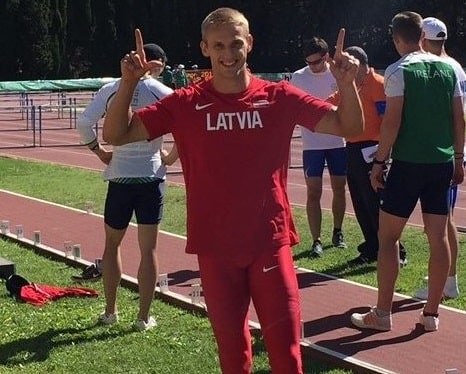Movement Does Not Equal Progress

TRAINING LESSONS
CHAPTER 11
Doing a Lot is Not the Same as Doing It Right
While coaching youth track clubs in Manhattan, Kansas, I heard some horror stories of high school American football coaches having their athletes run a 40-yard dash fifty times, in order to get faster in the 100 meters and gain acceleration in football. For general strength and speed endurance, I would much rather have my athletes run in the trails of nearby Flint Hills prairie instead. The prairie has the scenery, the smell, and the hills. And it doesn’t give bad advice on speed training.
I also heard stories of young athletes graduating high school and experiencing the long-awaited signing day with their favorite college, only to discover that coaches would hammer them with insane training loads while their results dropped to a mediocre level. I have heard of some division II and division III decathletes training longer and harder than what I see among most professional decathletes. And I wish the results were as good. Unfortunately, many college programs pay much less attention to athletes’ training than those athletes’ former high school programs. The situation is similar in Europe. Everything is reduced to the notion that getting in more volume will produce better results. Everything else is secondary. When you are 13 years old and you have not trained a single day of your life, gradually increasing training volume for a while will certainly bring rapid improvements. Until the day when these improvements stop. Many young athletes start at a very early age and are pushed to their limits long before they reach a high level. Increasing training load alone will only fry young athletes’ Central Nervous System and their ability to recover. High school and college-age athletes’ recovery rate is high, and it is true that they can take on a large volume of training. But if the coach crosses athletes’ recovery limit constantly, then results can often decline rapidly and not come back for a long time. It is so obvious to me now, but it has not always been that way.
I remember when I was fifteen years old, I would spend 4 to 6 hours at my training facility in my little home town, especially during the school holidays. I did not have a conceptual understanding of training, and we were given access to the gym even if the coach could not be there with us. I started calling the gym my second home. I had an idea that by moving more, doing everything I could possibly think of, that would make me invincible. To some degree, it made me stronger, but I also became more injured. My training program at times included a basketball vertical jump program that my cousin and I had dug up online; there were core routines inspired from the “Rocky” movies, gymnastic elements, technique training, heavy weight lifting. All of it in the same training routine, five days per week. There were no systematics or direction. Only a notion that more is better.
The saying “practice makes perfect” also secretly implies “the more the better”. We have fallen into this trap. To a large part of the world, exercising means “embracing the suck”. It’s a chore that needs to be done to satisfy cardiologists and self-image insecurities. We have gyms full of former athletes, now gym warriors who seem to be working out on Sunday at 7 AM, Friday at 10 PM and everything in between. I wonder why the “former” athletes? To those with an athletic drive and experience with competitive sports, exercise is often an addiction. We feel like more must ALWAYS mean better.
Instead, if a track and field athlete wants to experience progress in training and competition, it is a much better idea to use a planned, systematic training approach with a clear direction. Sometimes that means more, sometimes it means less, sometimes (rarely) it means not training at all.
A lot of people work long hours and don’t find time for rest. Do you think that every one of these people has a direction, and know what they want from life? I’d say most busy people move too much and progress too little. They likely fall into the same trap of thinking that doing more must always mean doing better. We no longer see the difference between quality and quantity.
The athletic culture of our time is telling me and you to “just do it!”, no matter what. Sometimes it does make us get up and move but that’s as far as it goes. That culture is incapable of giving us a constructive and gradual plan to make real progress. This is a problem of our time in the sport of track and field and coaches need to be aware of it in order to become effective, and athletes need to be aware of it in order to become consistent.
A WORD OF CAUTION
It is okay to work and train mindlessly without a vision and a mission if the satisfaction of the grind is more important to you than consistent excellence. While movement does not equal progress, no movement at all does not even offer the potential for progress. Please don’t misunderstand this. While too much training in track and field is counterproductive, we should not take too much license to daydream, reflect, procrastinate and never actually do anything. That is a flawed license.
LESSON
Training more, on its own, will not necessarily add to the cumulative training effect. Training within a proper context and a direction is more likely to give you the progress you desire.





Comments